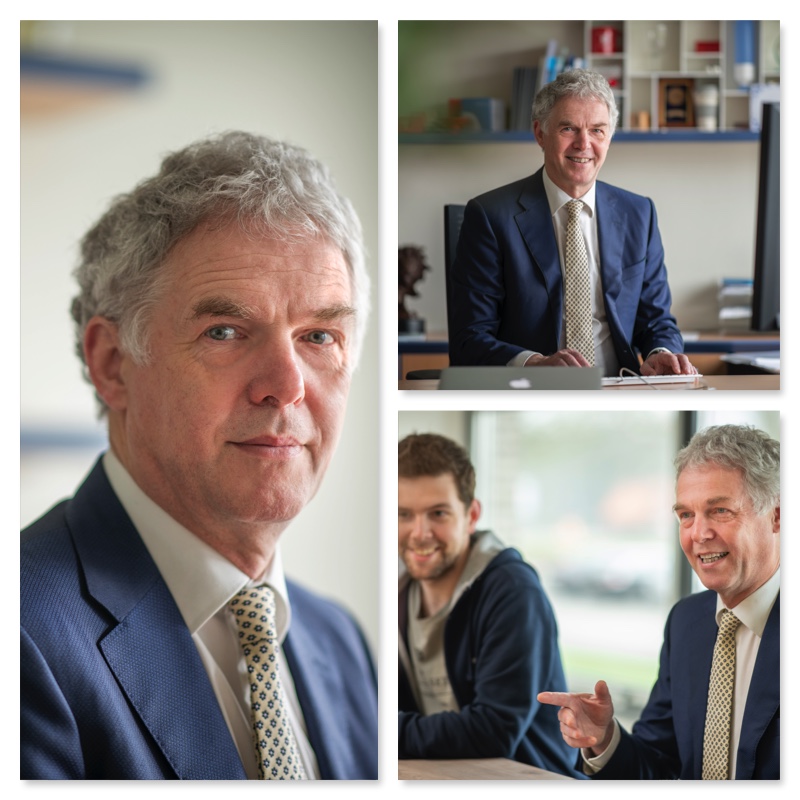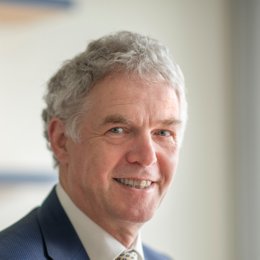The beauty of crystals
Crystals fascinate him greatly. It is because of their symmetry, because of the techniques for unravelling their atomic structure, and because of the stunning properties, they have at the interfaces with other materials. Thom Palstra always likes to understand how you can influence the large, macroscopic scale behaviour of materials by modifying them at the nanoscale.
It is a combination of physics, chemistry and crystallography he likes to work on, in multidisciplinary teams. “You can only book real progress with creative and talented people around you, from several backgrounds.” At the beginning of his scientific career, when he worked at Bell Labs in Murray Hill, every expertise you could imagine, was present. “That time in my life shaped my scientific thinking.” An eye-opener for Palstra, when he moved from physics to chemistry, was that actually creating your own materials in the lab - synthesizing them - is very important. “That’s the way to get a grip on the actual composition of materials. You are in the lead then.”
Room temperature
One of the research topics that is a recurrent theme in his career, is superconductivity. He was one of the discoverers of the superconducting properties of ‘bucky balls’, the spheric C60-molecules. “Superconductivity typically is one of the subjects the University of Twente is strong at, with a creative group of people that can’t be found in many other places.” The phenomenon, causing electrical resistance to go to zero, has found applications in MRI scanners in the hospital, and in particle accelerators, for example. The major disadvantage is that it takes place at extremely low temperatures. Palstra, therefore, is thrilled by the recent news that researchers found ways of doing it at room temperature. This, in turn, has many other complications, so it isn’t a reality yet. “But imagine we could transport and store energy without losses. That would be a revolution. In many ways, with our knowledge of materials, we can create sustainable solutions. Think of new, less burdensome materials for electric car batteries.” Another topic he is highly interested in, is the topological materials with special surface properties. They will enable a new vision of current conduction and data storage. “The design of the transistor still is quite ‘dissipative’: it consumes energy while doing its job. Working with topological excitations, you employ so-called ‘skyrmions’ that can’t easily jump from one energy level to another. In other words, this opens the way to less energy-intensive solutions.”
Strategic choices
During the period (2014-2020) he was the University of Twente’s Rector Magnificus, Thom Palstra had the privilege of looking at science in a broad sense, with a helicopter view. He likes to continue doing so, now being a scientist again. “We can see young scientists ‘hopping’ from one project to another, just because there is some short term money available for it. In this way, you can never build a long-term talent policy. I would like to invite young researchers to look at their future in a more strategic way. If you aim at research that has an impact on society, you’ll have to make choices that are consistent.” As one of the new members of the Board of ‘NWO-TTW’, the technical and applied sciences section of the Dutch Research Council, he is determined to put this on the agenda as well. Part of a long-term strategy are investments in infrastructure. Palstra is highly interested in developments like the Einstein Telescope, for the detection of gravitation waves, or in the Data Infrastructure. “Within materials science, large databases are available for doing calculations on the electronic structure or the crystal structure of millions of materials. It is still challenging to combine this large-scale data analysis and other materials properties or microscopic data.”
The right questions
“In my teaching, it is not ‘just another subject’. What I would like students to learn from me, is not just absorbing new knowledge. They should learn to ask the right scientific questions and take initiative. That includes themes like ethics and integrity.” During his time at the University of Groningen, he once won the Award for being the best chemistry lecturer. “Already then, it was all about building materials using atoms as building blocks. It is highly fascinating to realize how very simple and basic rules of atoms ordering, can lead to deep complexity and infinite possibilities for materials.”
About Thom Palstra
Thom Palstra studied and did his PhD at Leiden University. After that, he was with Bell Labs at Murray Hill, New Jersey for a period of ten years. In 1996, he moved to the University of Groningen. He was, amongst others, Dean of the Faculty of Science and Engineering, as it is called today, and scientific director of the prestigious Zernike Institute for Advanced Materials. In 2016, he was appointed Rector Magnificus of the University of Twente, in 2020 he continued his scientific career as Professor of Solid State Chemistry.
Press Photos

These Press Photos can be used with no copyright restrictions.

